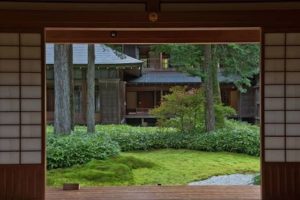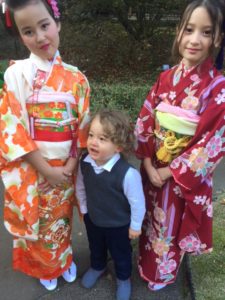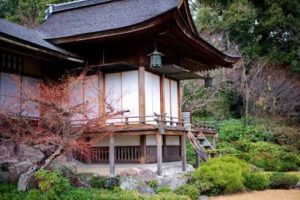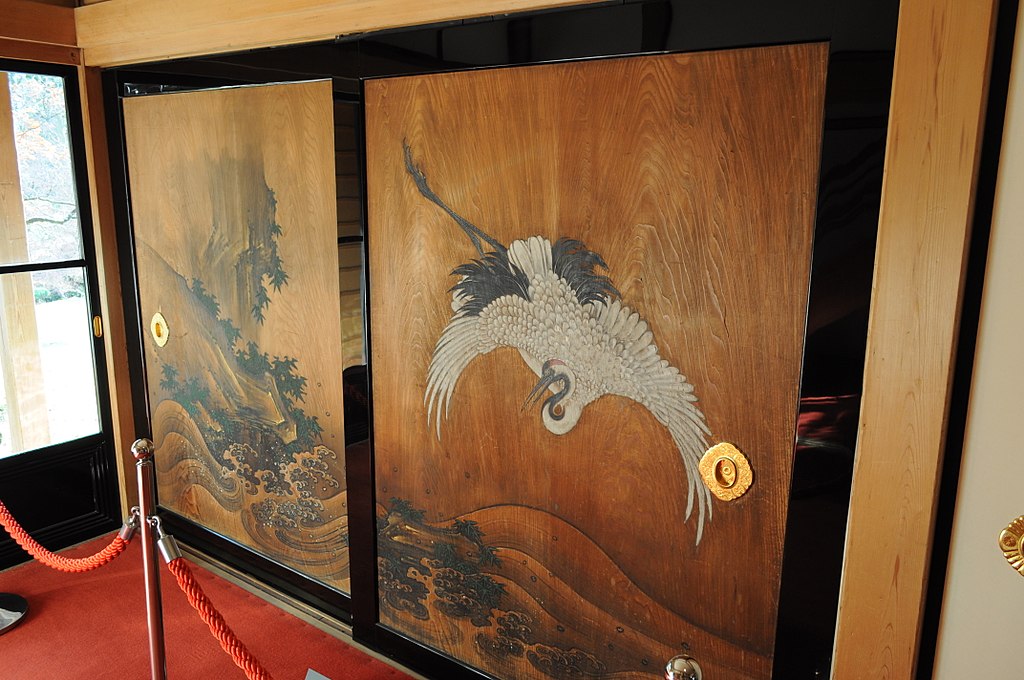Above: Wall painting in Emperor’s villa in Nikko
For our last day in the country we decided to go to Nikko, a town in the mountains two hundred kilometres north of Tokyo, noted at this time of the year for its magnificent autumn colours and its fantastic World Heritage listed temple complex Tosho-gu. It meant the bullet train back to Tokyo and two more trains to Nikko, arriving in the afternoon. It was lovely to find we were in a modest town rather like a ski village high in the mountains. With an hour or two before the sun went down, we took a bus to the former Royal retreat, a magnificent traditional all-wooden villa in the midst of another gorgeous garden with a little stream running through it. We loved the elegance of the many simple wooden rooms with tatami floor coverings, looking on to pretty internal courtyards to out the garden.


As our flight left Tokyo in the evening the next day, Sally decided she wanted to walk in the National Park around lakes high in the mountains before we left. We had a quick visit to the famous shrine complex but despite its spectacular appearance, the hordes had arrived early in the day and we beat a retreat to a bus taking to the mountains, labouring up dozens of hairpin bends till it got to a beautiful high lake called Chuzen-Ji. A walk around the lake could have taken a couple of hours, but my knees had given up the ghost so we sat on a crumpled old wooden jetty and gazed at the lovely lake and the mountains surrounding it and talked about our remarkable journey and pondered many thoughts and reflections about Japan and life in general. It was a very special way to end our trip in a slow and relaxed way. Eventually we got up and went to a superb craft shop and bought some lovely implements to take home and finally caught the bus back to Nikko and thence the trains to Tokyo and the airport.
What were our lasting impressions?! A busy, thriving, highly integrated society, charming and welcoming to strangers, but as a friend says, happy to see you leave fairly soon. A lasting impression for me was the ease and contentment of their lifestyle. Smiling and chatting constantly, you rarely see, at least in public, an argument or discord. The cities are immense: from the train you see huge districts rushing by of seemingly endless high or medium rise accomodation towers and blocks. But the people seem completely untroubled by the density of their living style. Admittedly we were mostly in large sophisticated cities but we saw no poverty or discontent even in the poorer side streets.
The fact that most of the thronging crowds visiting the sacred sites were Japanese was fascinating to me. The spirituality of these places is clearly a daily part of the lives of all Japanese. They visit these places constantly, not to worship, but to be there, to partake of that spirituality as prt of their almost daily lives. It is very impressive and clearly is a strong bond for the whole . Some ask how can this be when you remember the cruelty and militarism of World War 2? I think the trauma of the war changed the whole society, no doubt encouraged, even dominated by the post war influence of the US.


